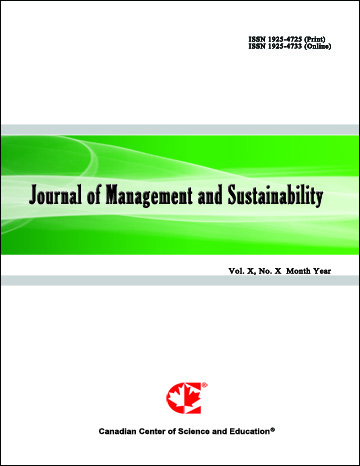The Innovation Management Modelling in the Water Sector in the United Arab Emirates: A Mixed-Methods Study
- Saeed Khalifa Alshaali
- Somayyah Abdulla AlYammahi
Abstract
The United Arab Emirates (UAE) is encountering a scarcity of water resources. It is counting on innovation management to alleviate the situation. In that context, there is a need for a managerial framework for this subject. Therefore, the aim of the current study is to build up an innovative managerial model. To establish this model, we applied a convergent, parallel, mixed-methods design. The study participants (n = 42) consisted mostly of leaders and experts working for the main water institutions. We analysed the quantitative method via partial least squares structural equation modelling (PLS-SEM), a SmartPLS software. Qualitative method procedures were conducted starting from coding, categorising, obtaining themes, and lastly, the establishment of grounded theory. We obtained two rigid inputs (quantitative and qualitative models) for the last phase (mixed-methods analysis). The quantitative findings revealed a significant and robust relationship (t value = 26.6, p = 0.000, coefficient = 0.888, R2 = 0.788). The qualitative findings also produced a steady grounded theory. Both quantitative and qualitative models were crossed according to the ‘convergence coding matrix’ and ‘triangulation analysis protocol’. Ultimately, we built a holistic framework named ‘the UAE water innovation model’, consisting of 12 components (meta-themes). This model should be adopted as the main guide for innovation management and strategy in water public sector institutions. Globally, this model could be a significant contribution, and it would be applicable to any country in the world with the same arid environment as the UAE.
- Full Text:
 PDF
PDF
- DOI:10.5539/jms.v12n2p1
Journal Metrics
Google-based Impact Factor (2021): 1.54
h-index (July 2022): 37
i10-index (July 2022): 147
h5-index (2017-2021): 12
h5-median (2017-2021): 19
Index
- Academic Journals Database
- ANVUR (Italian National Agency for the Evaluation of Universities and Research Institutes)
- CAB Abstracts
- CNKI Scholar
- EconBiz
- Excellence in Research for Australia (ERA)
- GETIT@YALE (Yale University Library)
- Harvard Library
- HeinOnline
- Infotrieve
- JournalTOCs
- LOCKSS
- MIAR
- PKP Open Archives Harvester
- RePEc
- Scilit
- SHERPA/RoMEO
- Stanford Libraries
- UCR Library
Contact
- Evelyn XiaoEditorial Assistant
- jms@ccsenet.org
